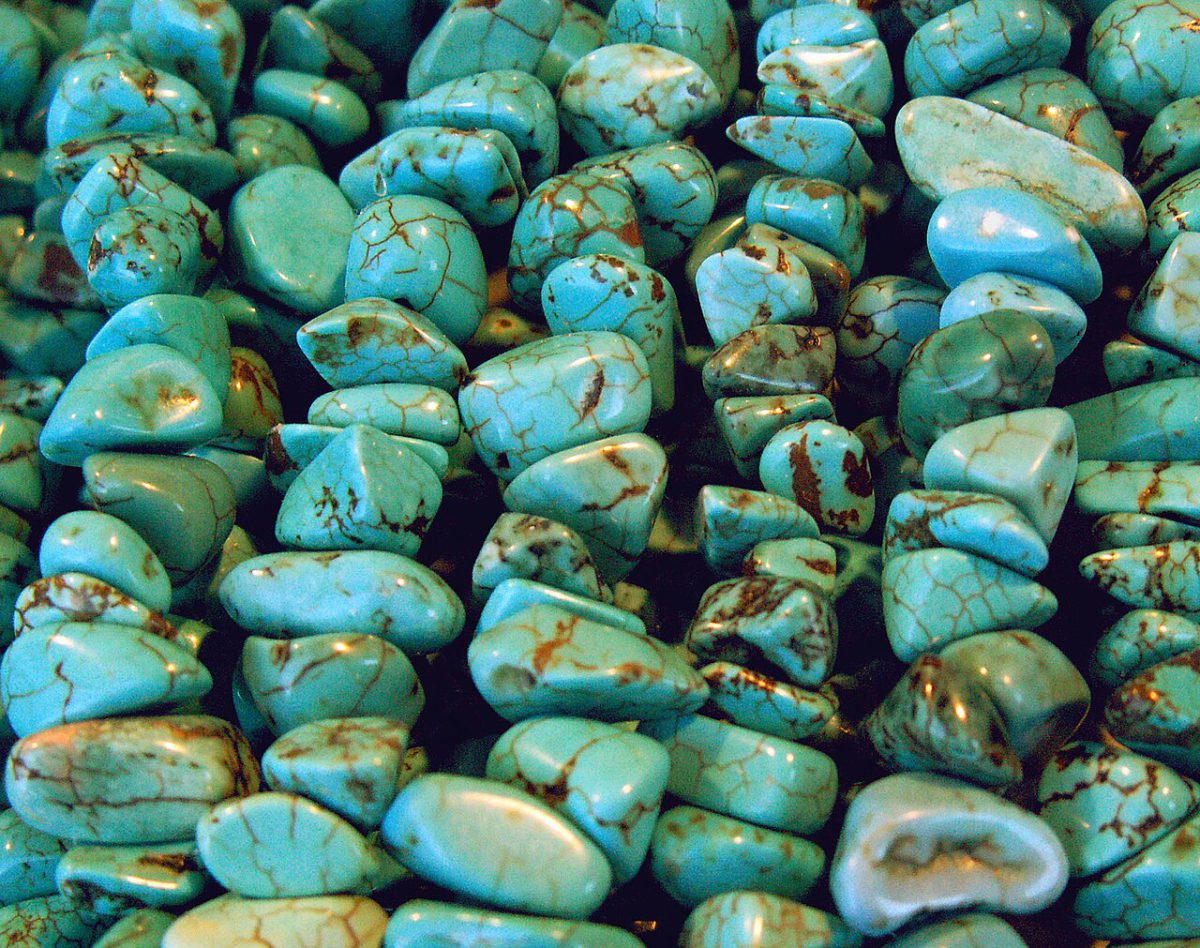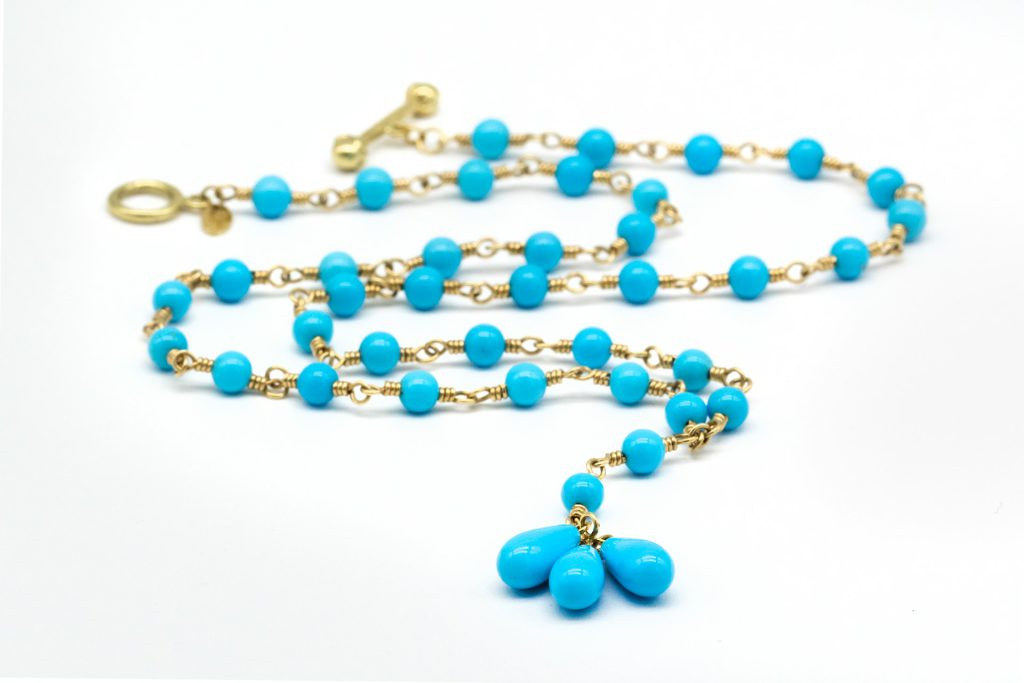Table of Contents
Iranian Turquoise stands out as a gemstone with a history that stretches back to approximately 6,000 BC, showcasing its enduring allure across millennia. Renowned for its stunning shades of blue and green, this gemstone has its roots in Persia, where some of the most significant turquoise mines still thrive today. The ancient tales tell of how turquoise made its way into Western culture through the bustling trade routes of the Silk Road, linking the vibrant cities of Nishapur, Tous, Damghan, and Baghdad to the far reaches of Asia Minor and Europe. This rich heritage not only highlights the beauty of Iranian Turquoise but also its role as a bridge between cultures.
The captivating journey of Iranian Turquoise is steeped in both history and artistry. As artisans have crafted this gemstone into exquisite jewelry and intricate designs, they have preserved its legacy while breathing new life into its timeless appeal. Each piece tells a story, connecting the past with the present, and reflecting the craftsmanship that has been handed down through generations. Whether adorning a royal crown or gracing a simple necklace, Iranian Turquoise continues to enchant, serving as a symbol of both beauty and cultural significance.
History of Iranian Turquoise
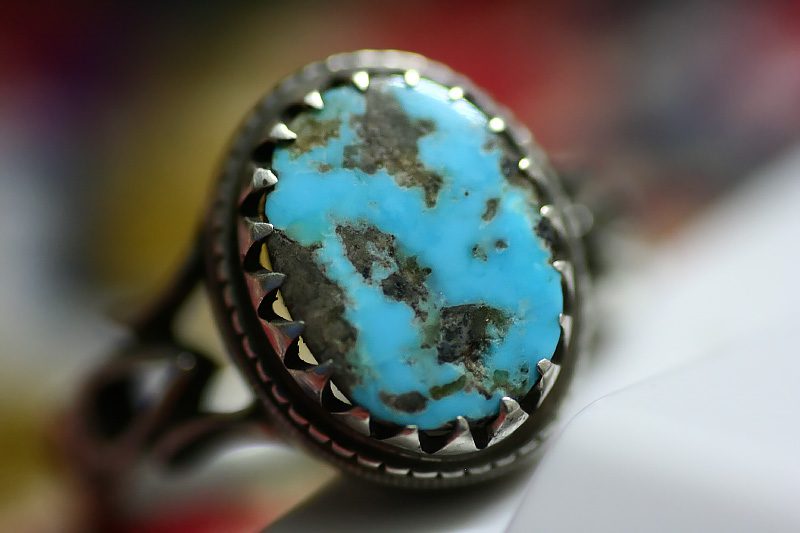
Turquoise has long captivated hearts and minds, with its vibrant hues gracing jewelry and artifacts since around 6,000 BC. Among the world’s oldest turquoise mines, Persia boasts a rich tapestry of history tied to this enchanting gemstone. As the Silk Road flourished, it facilitated the introduction of Persian Turquoise to the Western world, connecting far-flung regions through trade. Cities like Tous, Nishapur, and Baghdad became pivotal in this exchange, allowing the exquisite stones to journey into Europe and beyond. This trade not only showcased the beauty of the gemstone but also intertwined it with the cultural and economic fabric of ancient civilizations.
As Persian merchants traversed the expansive Silk Road over 2,000 years ago, turquoise was more than just a commodity; it symbolized protection and good fortune. It was believed that this vibrant stone shielded travelers from harm, enhancing their journeys across vast terrains. The turquoise from Persian mines is often regarded as some of the finest in the world, celebrated for its exceptional quality and purity. This enduring legacy continues to resonate, as each piece of Iranian Turquoise carries with it the rich history of its origins and the stories of those who cherished it.
Where is Iranian Turquoise Found
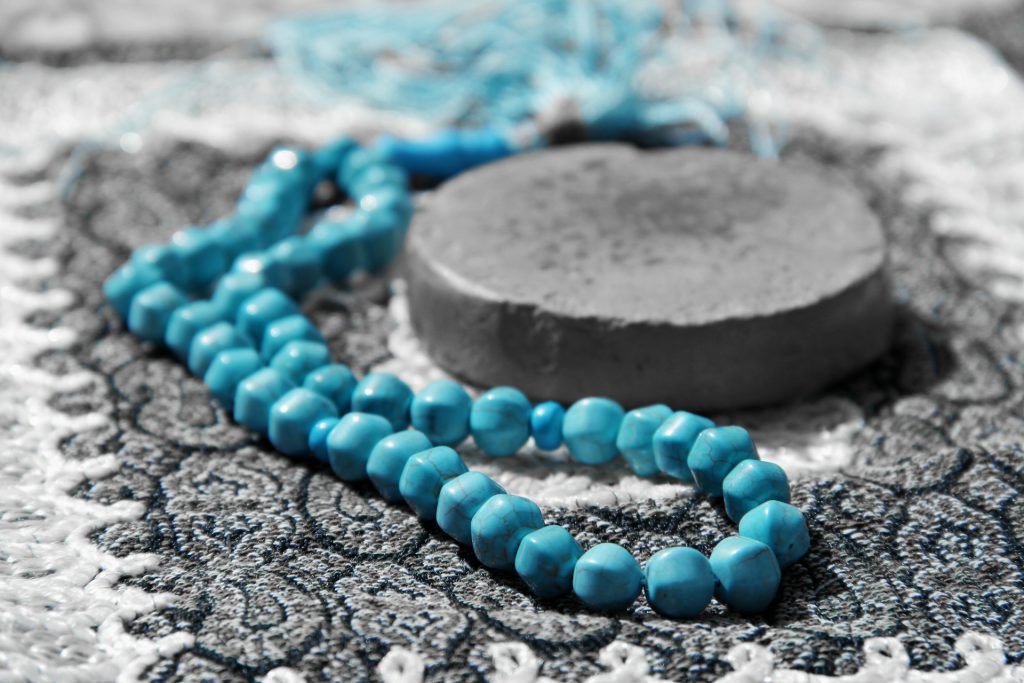
Turquoise flourishes in regions that boast dry and semi-arid climates, rich in copper deposits. In Iran, Neishabour emerges as the epicenter of turquoise mining, not just within the country but worldwide. Located in Khorasan Province in northeastern Iran, Neishabour is home to the largest and oldest turquoise mine, a remarkable site that has been active for an incredible 7,000 years. Each year, this historic mine continues to yield between 30 to 40 tons of turquoise, feeding a vibrant industry that thrives on this precious stone.
The city itself is a bustling hub of creativity, with around 300 workshops dedicated to crafting turquoise into stunning jewelry and decorative pieces. These artisans honor the rich heritage of the gemstone, transforming raw materials into exquisite works of art. Among the treasures of Neishabour is a 7,000-year-old statuette of a cow, housed in the National Museum of Iran in Tehran, representing the ancient connection between the land and this cherished gem. This deep-rooted legacy ensures that Neishabour remains synonymous with turquoise, attracting enthusiasts and collectors from around the globe.
Etymology of Iranian Turquoise
The term “turquoise” has a fascinating backstory, originating from the French word for “Turkish.” This name reflects the gemstone’s journey into Europe, where it was first introduced through Turkey. However, the true roots of this captivating stone can be traced back to Iran, where it is known as “Firoozeh.” In Persian, this word translates to “victory,” highlighting the stone’s esteemed place in Iranian culture and history.
As the national gemstone of Iran, turquoise is more than just a beautiful mineral; it embodies a rich heritage that resonates through centuries. Celebrated for its vibrant hues and unique qualities, it has become a symbol of triumph and resilience. The intricate relationship between the name and its origins emphasizes the gemstone’s significance, as it continues to capture the hearts of those who appreciate its beauty and the stories woven into its legacy.
Formation of Iranian Turquoise
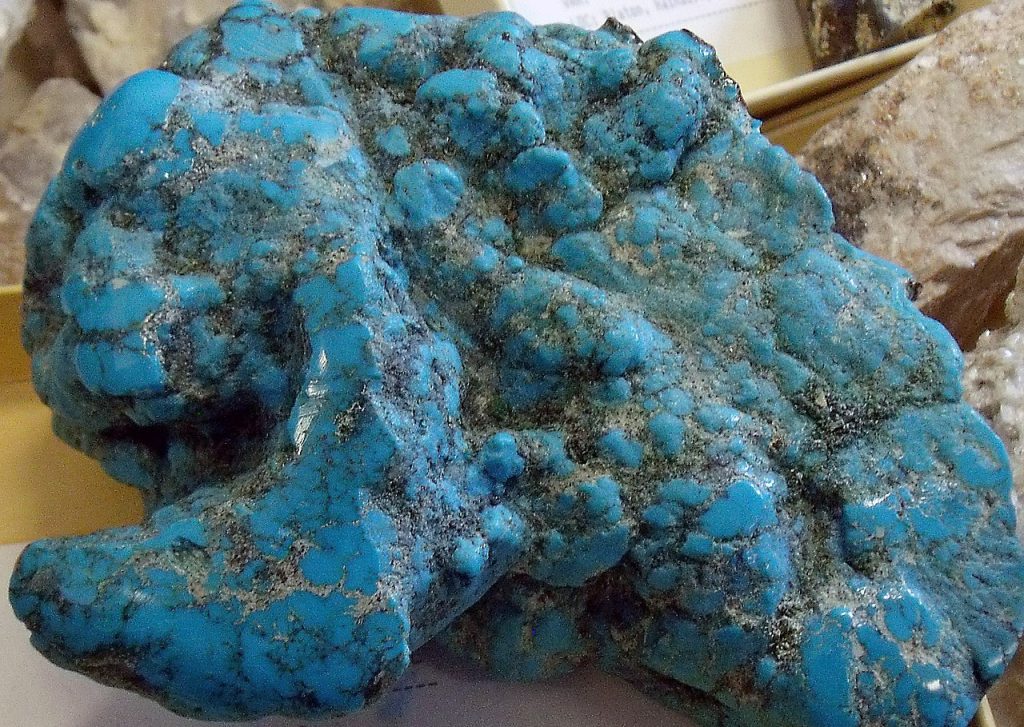
The formation of turquoise is a fascinating natural process that unfolds over millions of years. Found at shallow depths, turquoise reveals itself in stunning blue veins that adorn the walls of mines. As water seeps through the fractured landscape, it dissolves copper layers, creating a rich mineral solution. This mixture then encounters heated magma, which warms the water and enriches it with aluminum and phosphorus. As the solution cycles back through volcanic rocks, it deposits the turquoise in adjacent fractures, culminating in the beautiful gemstone we admire today. This intricate dance of elements is a testament to nature’s artistry, evolving slowly yet profoundly over aeons.
Among Iran’s numerous turquoise mines, the Neyshabur mine stands as a beacon of quality and significance. Renowned worldwide, it is celebrated for producing some of the finest turquoise available. While other mines exist throughout the country, they often yield stones of lesser quality and quantity, making Neyshabur the undisputed champion of Iranian turquoise. Beyond its use in jewelry, turquoise is also transformed into exquisite sculpted plates and artifacts, particularly in Isfahan, where artists craft beautiful inlaid works of art. This deep-rooted cultural heritage continues to thrive, showcasing turquoise’s versatility and enduring appeal in Iranian craftsmanship.
Color of Iranian Turquoise
The captivating colors of Iranian turquoise stem from the presence of copper oxide, resulting in a stunning array of hues. This gemstone can be found in vibrant shades ranging from deep turquoise and striking blue to enchanting blue-green, green, and even yellow-green. Among these variations, the iconic Persian blue stands out as the most desirable, commanding the highest prices due to its rarity and exquisite quality. On the other hand, green variations tend to be more affordable and offer their unique charm, making them accessible to a wider audience.
Additionally, some turquoise stones feature intriguing spider web patterns, with the arrangement of these stains playing a significant role in their appeal. Generally, stones with well-defined, organized patterns are favored over those with random or messy markings. Ultimately, the beauty of turquoise lies not only in its vibrant colors but also in its individual character, ensuring that each piece is unique. Whether you lean towards a bright blue or a subtly patterned green, there’s a piece of Iranian turquoise that perfectly captures your personal style.
Different Uses of Iranian Turquoise
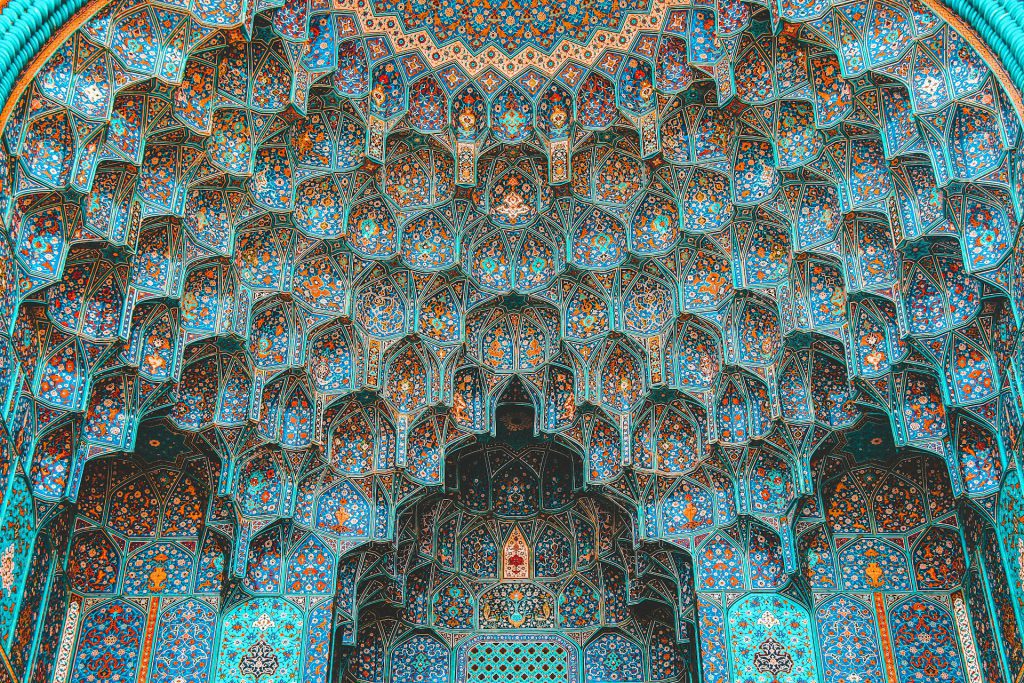
Persian Culture
In the heart of Persian culture, turquoise goes beyond mere ornamentation; it embodies deep spiritual connections. Revered in religious teachings, the stone is believed to bestow security and health upon its wearer. The Prophet’s encouragement to don turquoise reflects its sacred status, suggesting that this striking gemstone fortifies both the heart and vision. For many Iranians, wearing turquoise is not just a fashion statement but a daily reminder of divine protection and wellness.
Moreover, the enchanting hue of Persian turquoise has transcended jewelry, finding its way into the very fabric of Iranian architecture and literature. Iconic mosques, particularly in Isfahan, showcase turquoise tiles that evoke the serenity of the heavens. This vibrant color not only adorns the domes but also symbolizes a celestial connection, enriching the cultural narrative. As a result, turquoise has become a defining element of Iran’s artistic expression, linking spirituality with architectural beauty.
Persian Handicrafts
Inlaid turquoise artifacts, or Firoozeh koob, represent a stunning facet of Persian handicrafts, predominantly crafted in the historic city of Isfahan. These exquisite pieces have become coveted souvenirs for tourists, capturing the essence of Iranian artistry. Each item, from plates to decorative objects, showcases the intricate skill of artisans who meticulously set small fragments of turquoise into copper, silver, brass, and bronze. The vibrant blue-green hues of the stones create a mesmerizing contrast against the gleaming metals, making each piece a unique treasure that tells a story of tradition and craftsmanship.
The legacy of turquoise inlay has flourished for over half a century, evolving into one of the most cherished forms of Iranian art. Visitors to Isfahan’s famed Naqsh-e Jahan Square are often entranced by the stunning displays of these artifacts, each one reflecting the rich cultural heritage of the region. As the sunlight dances on the polished surfaces, the artistry becomes a vibrant celebration of both the natural beauty of turquoise and the skilled hands that transform it into timeless works of art.
Where to Buy Iranian Turquoise
For those exploring Iran with a packed itinerary, seeking out authentic turquoise doesn’t have to be a challenge. While Neishabour is the heart of turquoise production, vibrant handicraft shops and traditional bazaars in cities like Isfahan, Tehran, and Shiraz offer plenty of opportunities to find this stunning gemstone. Each city boasts its unique flair, presenting a diverse array of turquoise jewelry and decorative items that capture the essence of Iranian craftsmanship.
In the bustling markets, you’ll encounter artisans showcasing their creations, from intricately designed necklaces to exquisite inlaid pieces. These shops not only provide a convenient way to purchase genuine Iranian turquoise but also allow you to immerse yourself in the local culture. Whether you’re looking for a special souvenir or a statement piece, the rich selection available in these cities ensures you can take home a piece of Iran’s artistic heritage, beautifully reflecting the legacy of this treasured gemstone.
How Much Is Iranian Turquoise
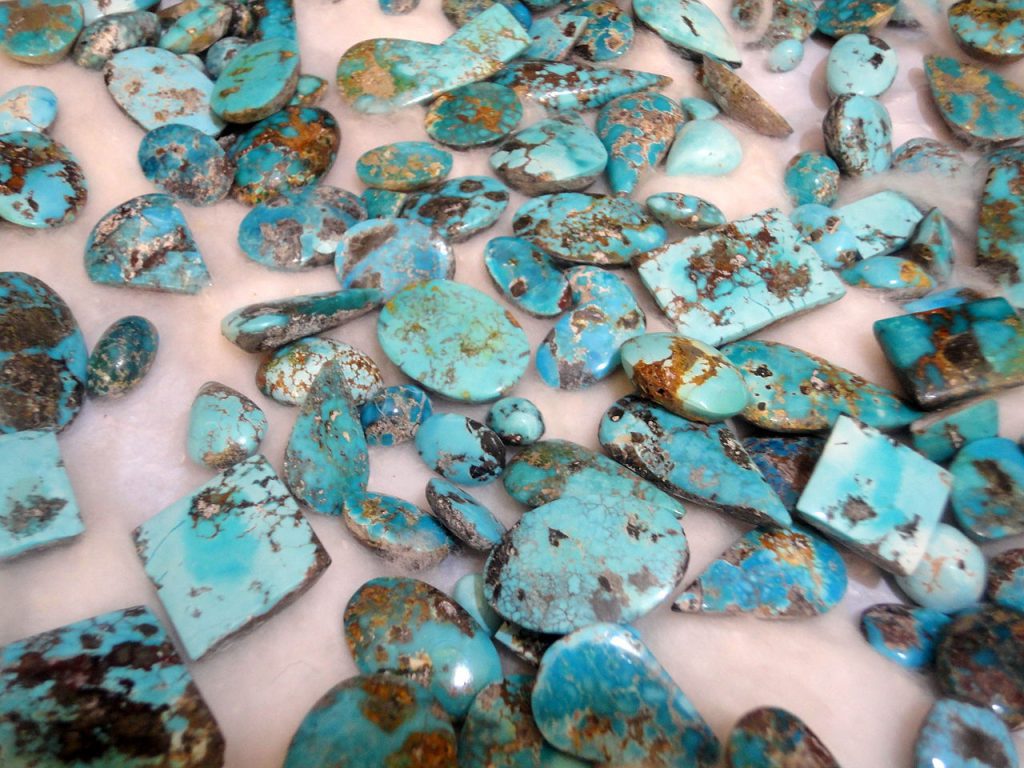
The price of Iranian turquoise can vary widely, depending on factors such as size, quality, and craftsmanship. Whether you’re interested in a striking piece of jewelry, like a Persian turquoise ring, or a beautifully crafted Firoozeh Koobi—an art form that involves inlaying small turquoise stones into copper—there are options to suit various budgets. Generally, you can expect to pay approximately anywhere from $30 to $3,000 for a piece of Iranian turquoise, reflecting the diversity and allure of this cherished gemstone.
When shopping for turquoise, it’s essential to consider not just the stone’s appearance but also its origin and the artistry involved in its creation. Higher-quality pieces, often characterized by vibrant colors and intricate designs, will naturally command a premium price. This range allows both casual buyers and dedicated collectors to find something that resonates with their taste and budget, ensuring that everyone can appreciate the beauty and heritage of Iranian turquoise.
FAQs about Iranian Turquoise
Q1: What is Iranian turquoise?
A1: For many years, the bright sky-blue Iranian turquoise, called “Persian turquoise,” has been highly desired. This type has a pure blue color without any green or black lines.
Q2: Is Persian turquoise valuable?
A2: Persian-grade turquoise is the most valuable because of its classic “robin’s egg blue” color. It contains trace amounts of vanadium and no iron.
Q3: How to identify Persian turquoise?
A3: Turquoise usually has a waxy to slightly shiny finish, and it is typically opaque, though it can be semi-transparent in thin pieces.
Q4: Which country turquoise is best?
A4: The most well-known places for high-quality turquoise are Iran (Persia), Egypt, Northwest China, Mexico, and the southwestern United States.
Q5: How to tell if turquoise is real?
A5: Real turquoise is rarely a bright blue; it’s usually more of a greenish-blue or pale blue. If the turquoise looks too bright, it might be fake.
Last Words: Discover the Best of Iranian Turquoise with a Customized Tour
Iranian Turquoise is a beautiful gemstone with a history dating back to around 6,000 BC. Known for its vibrant blue and green colors, it comes from Persia, where important turquoise mines still exist. The gemstone entered Western culture through trade routes like the Silk Road, connecting cities such as Nishapur, Tous, Damghan, and Baghdad to Europe and Asia Minor. Whether used in royal crowns or simple necklaces, Iranian Turquoise remains a symbol of beauty and cultural importance.
If you’re looking to experience the stunning beauty of Iranian Turquoise firsthand, consider traveling to Iran on a Customized tour. To Iran Tour specializes in creating unique Iran tours and travel packages that cater to your specific desires. Whether you’re interested in visiting historic turquoise mines, exploring local artisan workshops, or discovering the cultural significance of this gemstone, we can design a plan just for you. Our professional guides are here to ensure you have an unforgettable experience, connecting you with the rich heritage of Iranian Turquoise.
Let us help you embark on a journey that not only highlights the beauty of Iran Tours, but also immerses you in the vibrant culture and traditions of this remarkable country. With To Iran Tour, your adventure awaits!

